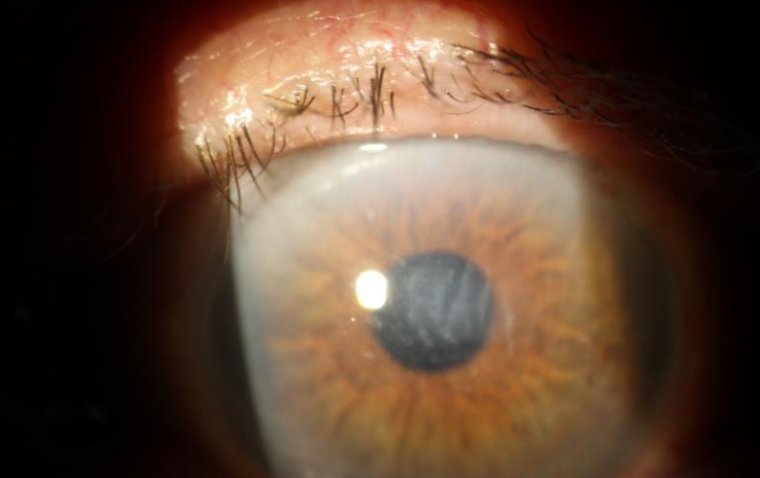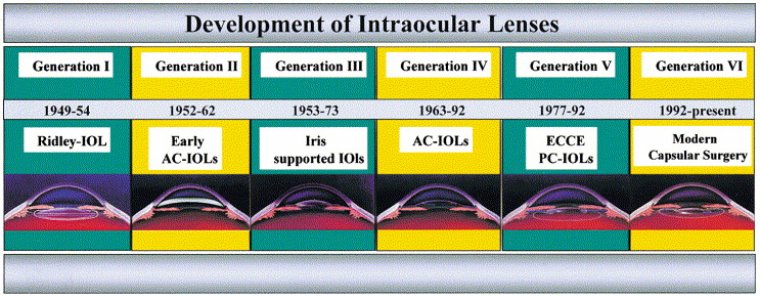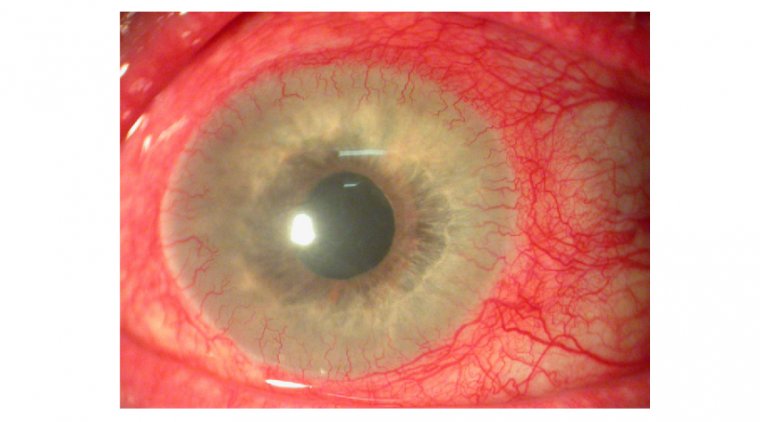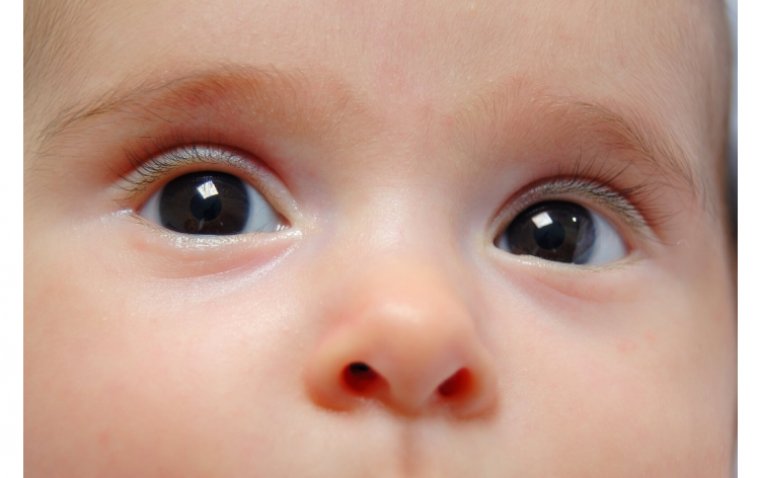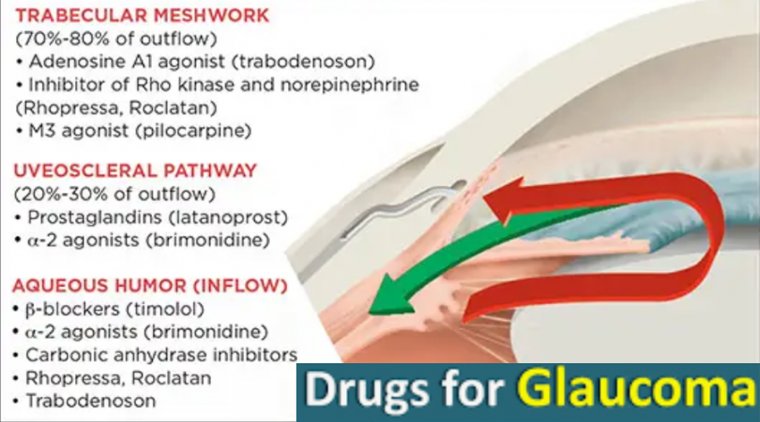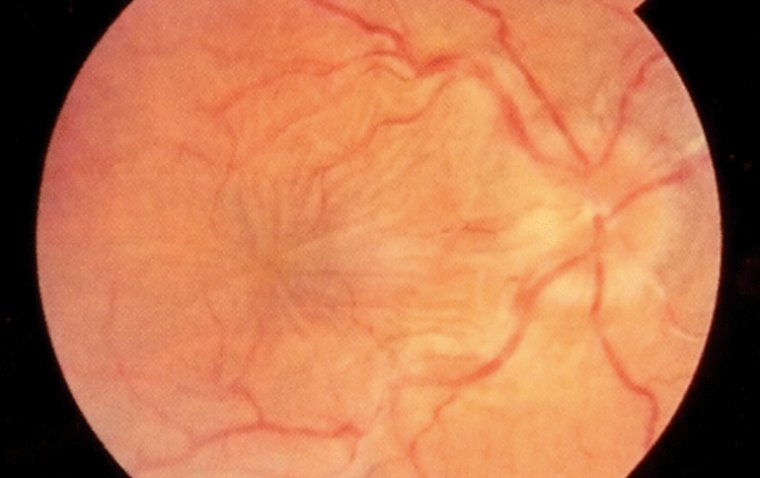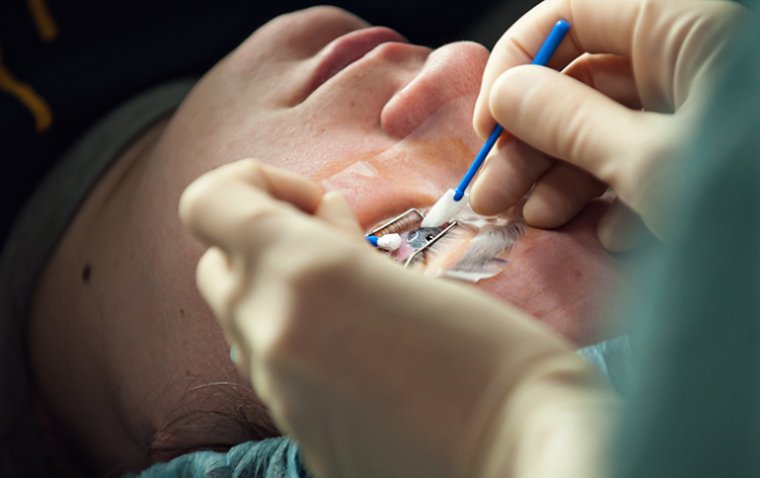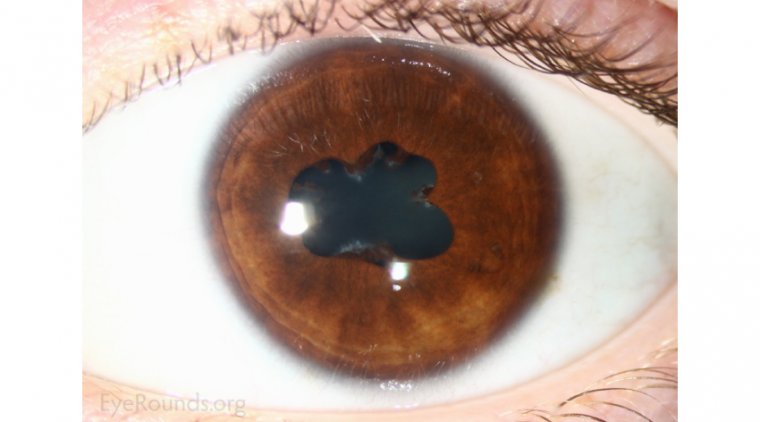
2023 Recap: Top 15 Breakthroughs in Ophthalmology Research
2024 Recap is here! Click to review:
Top 10 Breakthroughs in Ophthalmology Research
In the fast-evolving landscape of ophthalmology research, 2023 has proven to be a pivotal year marked by groundbreaking discoveries and innovation. From revolutionary cell replacement therapies to novel gene-editing techniques, scientists and researchers have been at the forefront of advancing eye care and treatment options.
Here are the top 15 research breakthroughs that are reshaping the future of ophthalmology:
1. Glaucoma Cell Replacement Therapy
.jpg) Researchers from the Schepens Eye Research Institute of Mass Eye and Ear have revealed a promising approach to glaucoma cell replacement therapy. In their recent investigation, the team altered the eye's microenvironment, enabling the extraction of stem cells from blood. These cells were then transformed into retinal ganglion cells with the ability to migrate and survive within the retina.
Researchers from the Schepens Eye Research Institute of Mass Eye and Ear have revealed a promising approach to glaucoma cell replacement therapy. In their recent investigation, the team altered the eye's microenvironment, enabling the extraction of stem cells from blood. These cells were then transformed into retinal ganglion cells with the ability to migrate and survive within the retina.
Although the study concentrated on the adult mouse retina, the findings, published in the Proceedings of the National Academy of Sciences (PNAS) on November 6th, suggest potential implications for the human retina in the future.
Discover the breakthrough cell replacement therapy for glaucoma developed by researchers.
2. Pseudo-Cell Formulation for Vitreoretinal Diseases
.jpg) A team from the Institute of Process Engineering (IPE) at the Chinese Academy of Sciences and Beijing Chaoyang Hospital has created an innovative "pseudo cell" formulation utilizing self-healing microcapsule-loaded exosomes. This development aims to tackle various vitreoretinal diseases, as detailed in their study published on October 23 in Nature Biomedical Engineering.
A team from the Institute of Process Engineering (IPE) at the Chinese Academy of Sciences and Beijing Chaoyang Hospital has created an innovative "pseudo cell" formulation utilizing self-healing microcapsule-loaded exosomes. This development aims to tackle various vitreoretinal diseases, as detailed in their study published on October 23 in Nature Biomedical Engineering.
The focus of the research is on vitreoretinal diseases, a heterogeneous category of vision-threatening conditions frequently associated with irreversible vision impairment.
Discover how scientists have developed a pseudo-cell formulation to treat vitreoretinal diseases.
3. Microscale Eye Implant for Diabetes Treatment
.jpg) In Sweden, scientists have engineered a microscale device intended for insertion into the eye, ushering in novel avenues for cell-based therapies targeting conditions such as diabetes.
In Sweden, scientists have engineered a microscale device intended for insertion into the eye, ushering in novel avenues for cell-based therapies targeting conditions such as diabetes.
Developed by a collaborative team from KTH Royal Institute of Technology and Karolinska Institutet, this 3D-printed apparatus seeks to encapsulate pancreatic cells that produce insulin along with electronic sensors. The results of their research have been documented in the journal Advanced Materials.
Check out the innovative microscale eye implant designed to treat diabetes.
4. Novel Compound for Wet AMD Treatment
.jpg) A newly developed compound at the University of Illinois Chicago has the capability to offer an alternative to injections for a substantial population grappling with an eye condition that can result in blindness. In a recent research published in Cell Reports Medicine, led by UIC researcher Yulia Komarova, it was found that a small-molecule inhibitor demonstrates effectiveness in reversing the damage caused by AMD and triggering regenerative and healing processes.
A newly developed compound at the University of Illinois Chicago has the capability to offer an alternative to injections for a substantial population grappling with an eye condition that can result in blindness. In a recent research published in Cell Reports Medicine, led by UIC researcher Yulia Komarova, it was found that a small-molecule inhibitor demonstrates effectiveness in reversing the damage caused by AMD and triggering regenerative and healing processes.
Moreover, this medication can be conveniently administered through eyedrops, representing an advancement over current AMD treatments that require frequent injections directly into the eye.
Learn about the novel compound that could potentially replace injections for wet AMD treatment.
5. Gene Editing Technique for LCA
.jpg)
A team of researchers at UW–Madison has successfully employed a novel experimental technique to fix faulty eye cells, addressing a gene mutation associated with Leber congenital amaurosis.
This innovative approach showcased its efficacy in both cultured cells derived from a patient with the currently untreatable inherited condition, LCA, and in a mouse model that accurately mimics this disease.
At the core of this method is the delivery of the CRISPR base editor gene-editing tool to retinal cells through the utilization of silica nanocapsules. In a proof-of-concept study, this strategy managed to restore the functionality of a pivotal protein responsible for regulating the flow of potassium ions within retinal tissue. This restoration, consequently, facilitates the proper functioning of light-detecting cells.
Explore the groundbreaking discovery of a new gene-editing technique by researchers to treat LCA.
6. Discovery of a New Subset of Interneurons in the Retina
.jpg) Researchers have identified a new subset of interneurons in the retina, according to a study by Northwestern Medicine published in Nature Communications. This discovery, detailed in the findings, elevates the eye's capacity to perceive and recognize objects under various lighting conditions, be it well-lit or low-light situations.
Researchers have identified a new subset of interneurons in the retina, according to a study by Northwestern Medicine published in Nature Communications. This discovery, detailed in the findings, elevates the eye's capacity to perceive and recognize objects under various lighting conditions, be it well-lit or low-light situations.
The results challenge previously held beliefs about the internal workings of the eye, holding substantial implications for shaping upcoming neuroscience research.
Learn about the new subset of interneurons in the retina discovered by investigators.
7. Electrospinning: A Promising Treatment for AMD
.jpg) Under the leadership of Professor Barbara Pierscionek from Anglia Ruskin University (ARU), scientists have achieved a groundbreaking milestone in ocular research. Through the use of nanotechnology, they have successfully engineered a 3D "scaffold" for the cultivation of retinal pigment epithelial (RPE) cells, potentially revolutionizing the treatment of a prevalent cause of blindness.
Under the leadership of Professor Barbara Pierscionek from Anglia Ruskin University (ARU), scientists have achieved a groundbreaking milestone in ocular research. Through the use of nanotechnology, they have successfully engineered a 3D "scaffold" for the cultivation of retinal pigment epithelial (RPE) cells, potentially revolutionizing the treatment of a prevalent cause of blindness.
The team's innovative breakthrough involves using the technique of "electrospinning" to construct a scaffold conducive to the flourishing of RPE cells. The introduction of a steroid, fluocinolone acetonide, recognized for its anti-inflammatory properties, fortifies the resilience of the cells, fostering their growth. Notably, the cultivated RPE cells remain healthy and viable, enduring for an impressive period of up to 150 days.
8. Small Molecule Discovery: Restoring Visual Function After Optic Nerve Injury
Neuroscientists at City University of Hong Kong (CityU) have recently unveiled the identification and effectiveness demonstration of a small molecule capable of stimulating nerve regeneration and reinstating visual functions subsequent to optic nerve injury. This discovery holds promising prospects for patients dealing with optic nerve injuries, including vision loss linked to glaucoma.
Dr. Eddie Ma Chi-him’s research team uncovered M1, a therapeutic small chemical that accelerates mitochondrial fusion and motility, leading to extensive axon regeneration. In mice treated with M1, the regenerated axons initiated neural activities in specific brain regions, resulting in the restoration of visual functions within four to six weeks post-optic nerve injury.
Explore the discovery by neuroscientists of a small molecule that restores visual function after optic nerve injury.
9. Nanobody for Retinitis Pigmentosa
.jpg) A team of scientists from the University of California, Irvine, has uncovered a groundbreaking finding: the identification of an extraordinary antibody with the potential to open a new approach for treating Retinitis Pigmentosa. This condition leads to the decline of central vision, as well as impairments in night and color vision.
A team of scientists from the University of California, Irvine, has uncovered a groundbreaking finding: the identification of an extraordinary antibody with the potential to open a new approach for treating Retinitis Pigmentosa. This condition leads to the decline of central vision, as well as impairments in night and color vision.
The UCI researchers have focused their efforts on studying a specific molecule, confident that it may hold the key to addressing Rhodopsin-associated autosomal dominant RP (adRP). Rhodopsin, the molecule under investigation, plays a crucial role as a photosensitive molecule in the human retina. It is located within rod photoreceptor cells, and mutations in the Rhodopsin gene are a primary contributor to adRP.
Learn about the discovery of a nanobody for treating retinitis pigmentosa by researchers.
10. Therapeutic Model for Incurable Eye Diseases
.jpg) In a publication featured as a Reviewed Preprint in eLife, researchers have successfully implanted human microglia cells into the mouse retina. This groundbreaking model shows potential for evaluating new treatments aimed at incurable eye diseases.
In a publication featured as a Reviewed Preprint in eLife, researchers have successfully implanted human microglia cells into the mouse retina. This groundbreaking model shows potential for evaluating new treatments aimed at incurable eye diseases.
The researchers underlined the importance of this research, presenting compelling data that highlights the potential of microglial replacement therapy in tackling disorders of the retinal and central nervous system.
Discover a new therapeutic model aimed at treating incurable eye diseases.
11. A New Therapeutic Target for Glaucoma Treatment
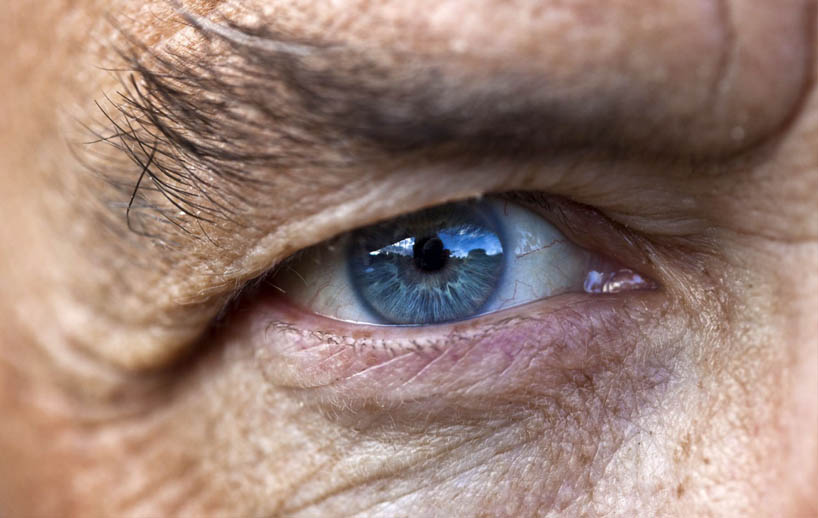 Scientists at the Indiana University School of Medicine have achieved a noteworthy breakthrough in addressing glaucoma, a neurodegenerative disease causing vision loss and blindness through damage to the optic nerve.
Scientists at the Indiana University School of Medicine have achieved a noteworthy breakthrough in addressing glaucoma, a neurodegenerative disease causing vision loss and blindness through damage to the optic nerve.
The research reveals that neurons depend on mitochondria for a sustained energy supply. By reinstating mitochondrial homeostasis in impaired neurons, the study suggests that optic nerve cells can be shielded from harm.
12. New Drugs for AMD and Beyond
.jpg) Conducted by the University of California, Irvine, a study has identified small-molecule drugs with potential applications in treating age-related macular degeneration (AMD), diabetic retinopathy (DR), and retinitis pigmentosa (RP).
Conducted by the University of California, Irvine, a study has identified small-molecule drugs with potential applications in treating age-related macular degeneration (AMD), diabetic retinopathy (DR), and retinitis pigmentosa (RP).
Through selective pharmacological inhibition of cyclic nucleotide phosphodiesterases, the researchers’ prototype of stress resilience-enhancing drugs effectively slowed or halted the advancement and progression of retinopathies in various genetic and environmental animal models.
Explore new drugs with potential for AMD and other diseases, marking significant advancements in treatment options.
13. Fish Oil Supplement for Vision Loss
 In a recent study, researchers may have uncovered a potential breakthrough in treating a major global cause of blindness. The findings propose that a novel fish oil supplement could be instrumental in averting vision loss linked to conditions like age-related macular degeneration, Alzheimer's, and diabetes.
In a recent study, researchers may have uncovered a potential breakthrough in treating a major global cause of blindness. The findings propose that a novel fish oil supplement could be instrumental in averting vision loss linked to conditions like age-related macular degeneration, Alzheimer's, and diabetes.
Scientists have developed a fresh variety of omega-3 fatty acid with the capability to permeate the eye's retina. This novel supplement demonstrates effectiveness in preventing age-related macular degeneration (AMD), a prominent contributor to blindness.
Explore the new fish oil supplement showing promise for reversing vision loss.
14. A Potential Biomarker and Candidate Drug for Uveal Melanoma
.jpg) A collaborative international investigation involving patients from Ireland and Spain has identified a potential drug and biomarker for the management of uveal melanoma (UM). UM, an uncommon type of eye cancer, originates in melanocytes, the cells responsible for eye color, and is located at the back of the eye. Scientists developed a laboratory model of primary UM using patient samples and a preclinical model of metastatic UM. Subsequently, various biochemical and pharmacological tests were employed to collect a spectrum of data.
A collaborative international investigation involving patients from Ireland and Spain has identified a potential drug and biomarker for the management of uveal melanoma (UM). UM, an uncommon type of eye cancer, originates in melanocytes, the cells responsible for eye color, and is located at the back of the eye. Scientists developed a laboratory model of primary UM using patient samples and a preclinical model of metastatic UM. Subsequently, various biochemical and pharmacological tests were employed to collect a spectrum of data.
The preclinical findings indicate, firstly, that elevated levels of CysLT receptors in primary UM tumors are indicative of a poor prognosis. Secondly, the candidate drug affects the molecular characteristics of the disease that facilitate the growth and spread of cancer in UM models. Thirdly, a biomarker was identified that seems to predict which patients will not develop metastatic disease.
Learn about the study uncovering a potential biomarker and candidate drug for uveal melanoma.
15. Rescuing Corneal Cells: A Breakthrough in Eye Health
.jpg) A research team from Université Laval and Université de Montréal has discovered a promising strategy to decelerate the advancement of the disease, potentially eliminating the need for transplantation when identified early. The researchers investigated whether injecting healthy mitochondria into cells could impede the progression of Fuchs' dystrophy.
A research team from Université Laval and Université de Montréal has discovered a promising strategy to decelerate the advancement of the disease, potentially eliminating the need for transplantation when identified early. The researchers investigated whether injecting healthy mitochondria into cells could impede the progression of Fuchs' dystrophy.
To test this hypothesis, they used endothelial cells obtained from corneal transplants. The team observed that by introducing healthy mitochondria, they could rescue cells on the brink of death, decreasing the mortality rate from 60% to 10%. These findings indicate that mitochondrial injection carries significant therapeutic potential.
A Glimpse into the Future
As these breakthroughs unfold, the future of ophthalmology appears increasingly promising. From innovative therapies to a deeper understanding of ocular biology, these discoveries pave the way for more effective treatments and improved quality of life for individuals affected by eye diseases. The collaborative efforts of researchers and scientists worldwide continue to push the boundaries of what's possible in the realm of eye care, offering hope to millions around the globe.
(1).jpg)
